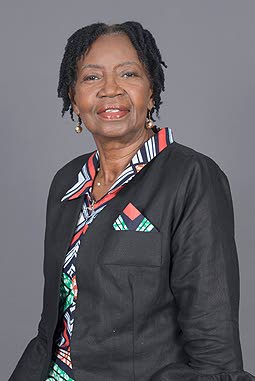The secrets of the sea: Tobago’s underwater history

Dr Rita Pemberton
Where are your monuments, your battles, martyrs
Where is your tribal memory? Sirs
In that grey vault. The sea. The Sea has locked them up.
The sea is history
The accuracy of these words, in the poem The Sea is History, by 1992 Nobel literature laureate Derek Walcott, was well demonstrated in the recent ten-lecture series “From Vlissengen to New Walcheren: The Dutch Presence in Tobago and the West Indies.”
This series provided enhanced knowledge of the history of Tobago by distinguished researchers from a range of disciplines who shared their ongoing research.
The series demonstrates that a research undertaking, whether focused on a battle, shipwrecks or a particular ship, the wooden components of a ship, the activities of individuals or groups or on shipbuilding in general, all of which relate to the field of maritime archaeology, can unlock the secrets of the sea.
This research presented in the lecture series developed out of the Rockley Bay Research Project supported by the University of Connecticut, Texas A&M University and the University of Wales, Trinity Saint David. Its objective was to secure a permit from the Executive Council of the Tobago House of Assembly to excavate artifacts from the Scarborough Harbour, construct a conservatory on the Scarborough Port, administer chemicals to the artifacts and then display them in the Fort George Museum, to preserve Tobago’s underwater heritage. Construction of the 4,800-square-foot Conservatory Building began in 2014.
The presentations’ interesting and important findings underscore the importance of the various branches of archaeology for a complete understanding of the early history of the island. It shows how it was positioned in the Dutch colonial enterprise, and that Dutch interest in Tobago was not an isolated affair, but part of larger colonial ambitions supported by both private and public companies.
Underwater research not only provides increased information but also gives context to this information by showing the connection between Dutch settlement in Tobago and those in other Caribbean territories and the contradictory relationship between the rival Europeans during the early colonising efforts.
Dutch settlement was stimulated by the need for salt, an important item for its trading activity, conducted in defiance of the Spanish claim to exclusive possession of territories on the Americas side of the line of demarcation issued by the Pope. In asserting its claim, Spain expelled the Dutch from Venezuela, the source of their salt supply, which caused the Dutch to turn to the Caribbean. As a result, Tobago, St Martin and the wild coast of the Guianas formed part of a Dutch sphere of influence from 1627.
Dutch colonising activity was undertaken by wealthy individuals from the rival districts of Zeeland and Amsterdam, which funded settlement operations. The interconnection between Tobago, St Martin and St Eustatius was established by their being colonised by the same private enterprise.
Jan de Moor and the Lampsins brothers were elite merchants from South Netherlands who were involved in politics. They were Protestants who engaged in the anti-Catholic revolt against Spain and worked together to establish Dutch settlements in defiance of Spain.
Jan de Moor, who organised and led a settlement in Tobago, worked in tandem with the Courteen brothers, who founded the English company which settled Barbados. The colonists sent to Tobago from Zeeland were from the British populated part of the province, which was around Flushing, an English port.
Hence there was communication between English-colonised Barbados and those in Dutch-settled Tobago. The Dutch colony also included Frenchmen. These instances indicate the complex nature of European politics of the era, when in colonial relations it was not always easy to distinguish between friends and enemies.


Comments
"The secrets of the sea: Tobago’s underwater history"